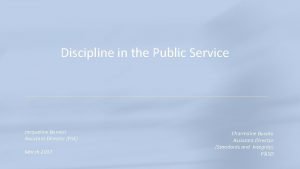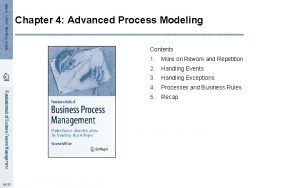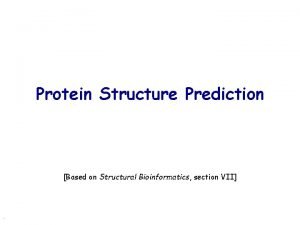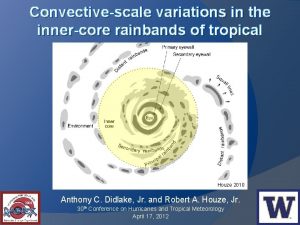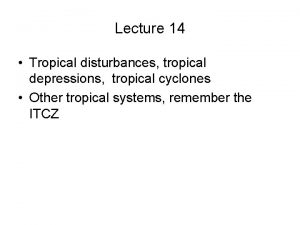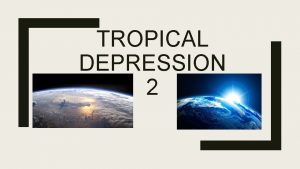Convectivescale modelling RMED and tropical process studies Charmaine








- Slides: 8

Convective-scale modelling: RMED and tropical process studies Charmaine Franklin Bureau of Meteorology

Regional Model Evaluation and Development • RMED is focussed on understanding and improving the convective-scale model • RA work is a shared activity the UM consortium • RMED is about science collaboration Coordination of Convection Ensembles RA DA Verification

Organisation of convection storm motion • Convective cells form on the leading edge of the observed squall • Convective cells form on the trailing edge of the simulated squall • Convective organisation affects duration, propagation & rainfall

Organisation of convection storm motion • Convective cells form on the leading edge of the observed squall • Convective cells form on the trailing edge of the simulated squall • Convective organisation affects duration, propagation & rainfall

Squall line cross-section analysis Gravity wave warms and dries upwind environment – prevents deep convection forming on leading edge storm motion (upstream/leading edge – downstream/trailing edge)

Sub-km scale simulations 1. 5 km 400 m ion ot m rm sto • Convective cells too circular in 1. 5 km – under resolved • 400 m simulation produces a more realistic squall line in terms of convective organisation and convective-stratiform partitioning Figures produced in collaboration with Drew Whitehouse NCI

Rain rate distribution • 100 m simulation does not show an improvement • 400 m simulation produces closest agreement with observations • Focus is on developing scale-aware parameterisations

https: //code. metoffice. gov. uk/trac/rmed/ Thank you… charmaine. franklin@bom. gov. au

